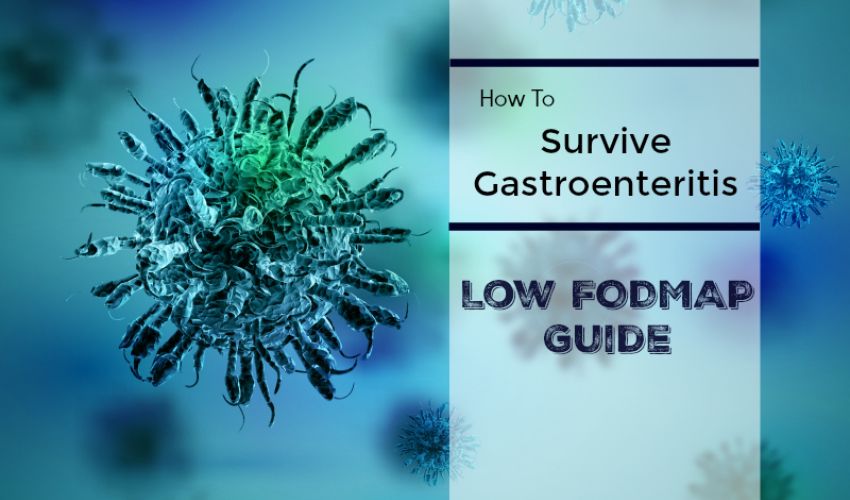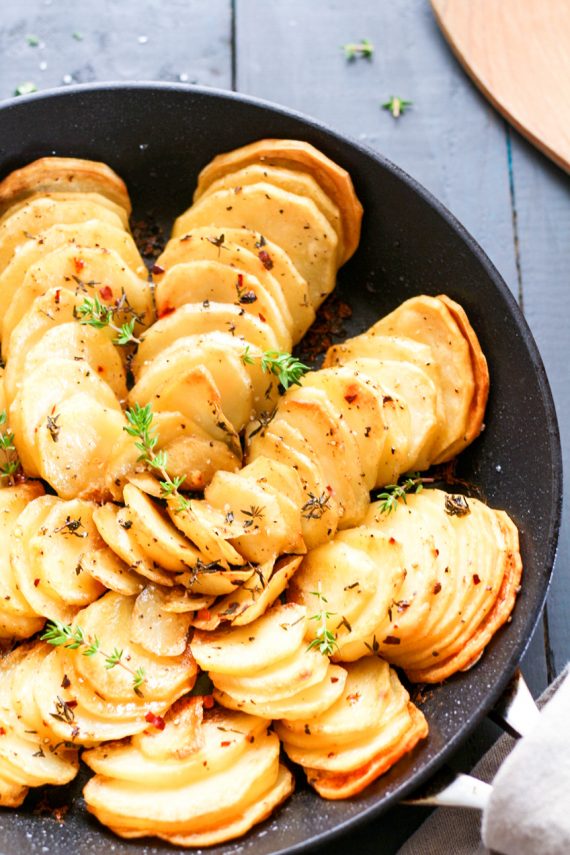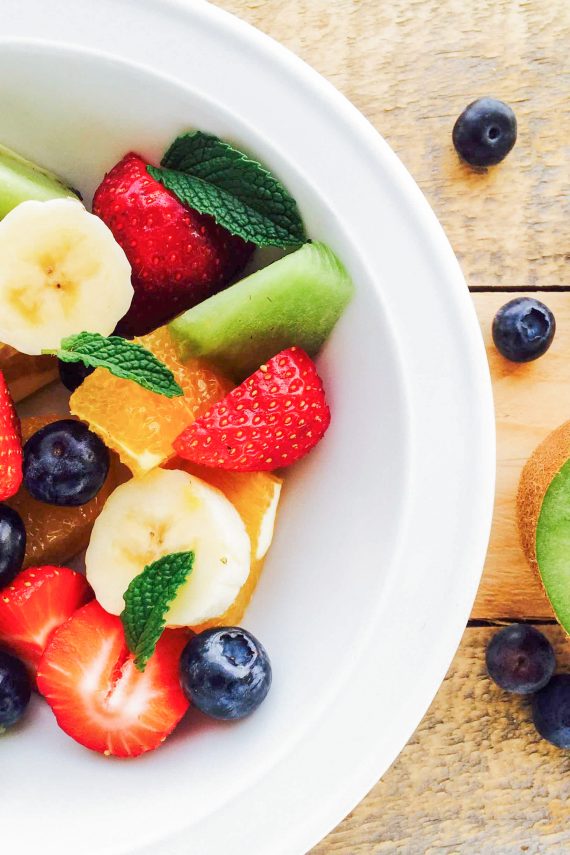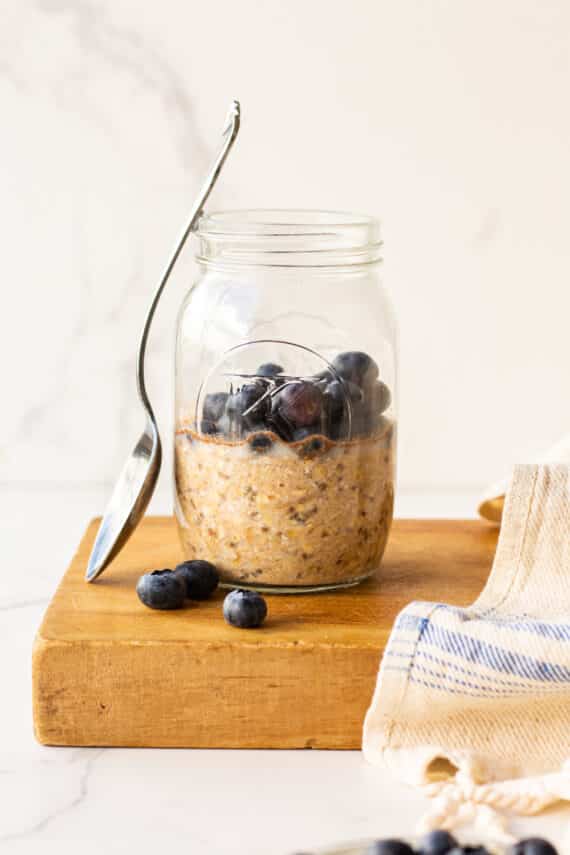Gastroenteritis, aka the stomach flu, is horrific and feels like a type of cruel torture. It left me clinging to the porcelain throne for dear life. I remember praying to the gastro gods to have mercy on my soul as my guts somersaulted, and I wondered what end I was going to project food from next. I would not wish gastro upon my worst enemy! Although it doesn’t feel like it at the time you will make it through (sometimes barely), however recovery can be tough, and over the next few days you will need to choose your food wisely. Keep reading for my low FODMAP guide to gastro:
Causes of Gastroenteritis
Viral gastroenteritis (aka stomach flu) can be caused by a number of virus like noroviruses (the most common cause of foodborne illness in the world) or rotavirus (more common in children who are infected when they put their fingers, or other objects contaminated with the virus, in their mouths) (1 2).
Bacterial gastroenteritis (aka food poisoning) occurs when you eat contaminated food. There are a number of varieties including: yersinia, found in pork; staphylococcus, found in dairy products, meat, and eggs; shigella, found in water (often swimming pools); salmonella, found in meat, dairy products, and eggs; campylobacter, found in meat and poultry; E. coli, found in ground beef and salads (3).
Symptoms of Gastroenteritis
- Sudden watery diarrhea
- Nausea
- Cramps and abdominal pain
- Vomiting
- Low to mild fever
- Occasional muscle aches (1 2 3).
Treat the Symptoms
- Talk to your doctor or pharmacist about anti-vomiting medication and/or anti-diarrheal medication (1).
- Drink plenty of fluids. You will need to drink more than normal to replace the fluid and electrolytes you’re are losing (1 3).
- Remove solid foods from your diet until the worst of the vomiting and diarrhea has passed (1 2).
- Take paracetamol for fever, aches and pain. Consult a pharmacist before taking medications like ibuprofen as these can cause further stomach upset (1 2).
- Get plenty of rest (2 3).
- Wash your hands thoroughly every time you use the bathroom (1). Viral gastroenteritis is highly contagious.
Know When to Get Help
Don’t be afraid to contact your doctor or phone your local health line if you are concerned about your symptoms. Here’s what to look out for:
- If after 24 hours you are still unable to keep any fluids down it may be time to seek help, especially if you are showing signs of dehydration like dry skin or mucus membranes, dry and sunken eyes, or small amounts of dark urine or no urine) (1 2 3).
- If you have a high temperature over 39ºC (4). When I had gastro I consistently had a temperature over 39ºC as well as signs of severe dehydration. My heath line help nurse advised me to immediately go to A&E where I was treated urgently for dehydration, and my temperature was monitored.
- If you are vomiting blood or have bloody diarrhea (1 2).
- If your symptoms persist for more than 3 days then you need to rule out other gastrointestinal causes (1 2).
- Seek help immediately if you are pregnant or breastfeeding as you may need intravenous fluids (1 2).
Stay Hydrated
The first 24 to 48 hours are about staying hydrated and replacing the fluids you have lost.
- You need to aim for 2 to 3 liters of fluids per day (1 4).
- Try sucking on ice chips or taking small sips of water (2).
- Drink rehydration fluids like Enerlyte or gastrolyte that are available through your pharmacy (1 2 4). Just check these for added high FODMAP sweeteners like sorbitol, mannitol, maltitol, and isomalt.
- Sports drinks like Powerade or Gatorade can be beneficial (2). These drinks contain electrolytes that can help you recover faster. However, once again make sure you check these products carefully for high fructose corn syrup as well as other high FODMAP sweeteners.
- Low FODMAP chicken broth is also a good option.
Are you ready to take control of your gut symptoms?
No thanks, my gut is perfect.
Article continues below
- Flat soda (like low FODMAP lemonade or non-alcoholic ginger beer) can be good options in small amounts (2 4). These are best diluted with water (one part soda to four parts water). Just be aware that carbonation can be an additional IBS trigger food so make sure you let these beverages go flat before consuming.
Eat Small Amounts Often
Once the worst of the diarrhea and vomiting has settled, you can start to reintroduce solid foods. Start eating when you feel hungry and stop eating if nausea returns.
- Start with bland foods (1 2 4). Focus on easy to digest foods like mashed potato, plain rice (I add a small amount of salt), gluten free toast, jelly (check for high FODMAP sweeteners), banana (unripe), rice crispbread, plain rice cakes.
- Once you are ready, start reintroducing light meals like chicken soup, chicken and mashed potato, porridge, cheese and crackers, ground beef and rice. Keep your food plain & fairly low in fat for a few days until your symptoms are fully under control (2).
- Focus on eating low FODMAP foods and avoid high FODMAP foods until your symptoms are settled (4). High FODMAP foods that contain excess fructose, sorbitol, or mannitol can draw water into your small and large intestines which can make diarrhea worse (4).
- Avoid caffeine, alcohol, nicotine, fatty or highly seasoned foods for a few days (2 4).
Final Thoughts
Gastroenteritis is horrible, but the good news is the symptoms will pass. Just remember to nurture yourself, stay hydrated and remember to seek help if you are feeling concerned.











Leave a Reply